A Visit With Zita Elze
We’re extremely honored to have Zita Elze, owner of Zita Elze Flowers and Zita Elze Design Academy (London, UK) joining us today. Her story will leave you inspired to pursue those gifts that are uniquely yours…and pursue them with passion. Grab a cup of coffee and spend a little time getting to know Zita!
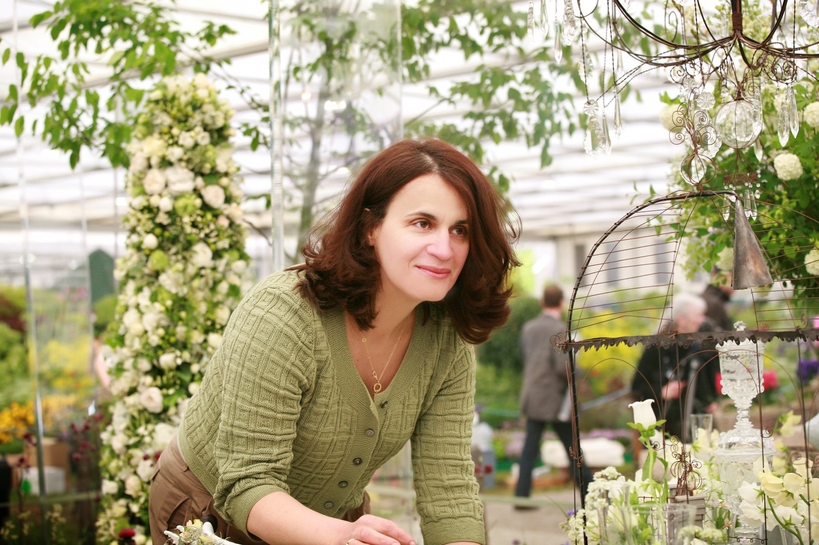
BB: What compelled you to get involved in the floral industry?
ZE: I didn’t actually plan to become a floral designer, it just came about. I was walking my dog in Kew and went past a Victorian corner shop which was empty and appeared to have been used as a flower shop previously. I later found out that it had closed a couple of years earlier.
I had just graduated from the Inchbald School of Design and hadn’t decided what I was going to do next.
Seeing the shop it occurred to me that it would be a lovely place to start a garden design practice in the rear section and have the front area nicely decorated with props, plants and flowers to generate a little extra income.
What drew people in was the way in which I used foliage – this wasn’t necessarily something that florists worked with in those days. Gradually, the flower business took over and I let the garden design side lapse.
BB: We would love to hear your background story…where you grew up, your educational
background, how you ended up in London, where you learned to love flowers,
etc.
ZE: I grew up in Mortugaba, a small town on the border of the states of Minas Gerais and Bahia in Brazil. I had a wonderful childhood on my grandfather’s fazenda and as far as I can remember I always used to love the flowers, grasses and trees that were natural to our relatively dry ecosystem called the Cerrado. I was also very interested in crafts – I remember my father organising a small studio in which I could paint and I loved to place flowers in all the containers. I would cut them in my mum’s garden and this always drove her mad. When I finished school at 17, I was very rebellious and no one in the family apart from my grandfather could understand me.
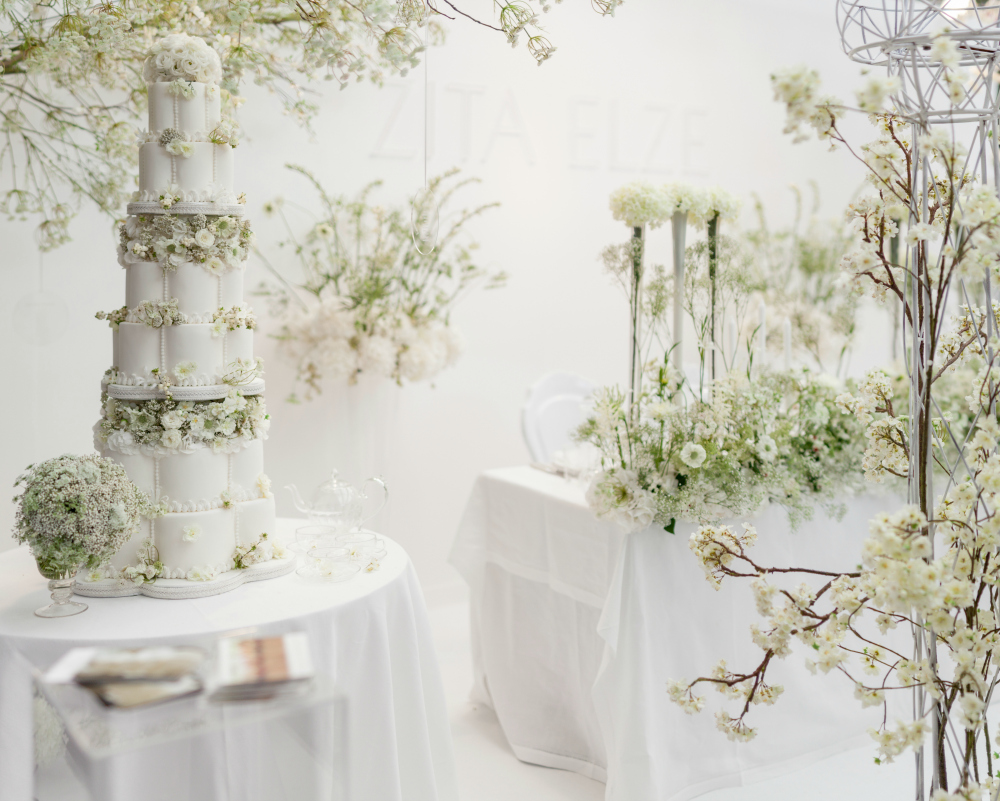
I remember it being a very unhappy and difficult time! We had no TV at that point just the radio and all I wanted was to leave and see the big city lights. So I escaped to Sao Paolo and initially lived there with an aunt and my Godmother. I worked during the day and studied in the evenings and very quickly became independent.
Those were difficult times in Brazil, with hyper-inflation, which is hard to understand unless you have lived through it.
I was still only 21 when I met the love of my life. We were married quite soon afterwards in a civil ceremony in Sao Paulo. My family being very traditional and religious, they were really upset even though my mother had been present at the wedding. We made our peace when my husband and I got married a few months later in a church in Rome, where his parents lived at the time.
When the authorities in my hometown received my marriage certificate dispatched from the Vatican, it was read out aloud in the church after Sunday mass so that everyone would know that I was honorably married. Times have changed…!
We decided to stay in Europe and having lived for a while in Rome, we moved on to Munich in Southern Germany for a couple of years. It took me a while to learn the language and start serious studies but I didn’t really like the vibe in Germany at the time.
We had a lot of old books at home and I wanted to take care of them, so I looked for a bookbinding school in Germany. A bit of research pointed me to Paris, where there is a long tradition of artistic bookbinding and design and so that’s where we moved next.
Once again I faced the challenge of having to learn the language, but French turned out to be much closer to Portuguese and therefore easier for me to learn. It was and is also much closer to my heart than the Germanic languages and France has become a second home for us.
After two months of intense study, I took an entry exam and was accepted by my preferred school. Three years later, I graduated in Bookbinding Design.
Now I need to briefly explain that artistic bookbinding is a rather special craft – you can count three months and more to get one book done and this demands extreme precision, a lot of patience and a flair for materials and design. I started to work for some bibliophiles and I did quite well, so I was asked to participate in a few exhibitions in Paris. When I look at these books today I can’t believe it was me that produced their covers.
I was living a full and happy life but once we had our two lovely children I spent some 10 years without the time or peace of mind required to continue with the books – I basically took care of the kids full-time in between Paris, Munich and later London.
We moved to London because I craved fresh air (we moved to the suburbs) and also wanted to learn English.
When the kids were about ten years old, I began to think about what I would do next. Bookbinding was now history and I wanted to learn something new. I looked after my family, I walked the dog, I decorated the flat and I spent a lot. I organised parties and dinners and dabbled in a lot of different things. I even did a one-month career floristry course. I learnt all the basics.
Since I was very interested in interiors I discovered two design schools in London and I applied. First I graduated in Interior Design from KLC and then in Garden Design from Inchbald.
Going to Inchbald was the best decision I ever made as I had some amazing teachers who really helped me to develop my design skills and didn’t just put me ‘ in a box’. Being a perfectionist I wanted to study forever, but one day I thought enough is enough; this was the time when I saw the little shop in Kew. I took the plunge even though everyone was telling me I was crazy to open a shop with no experience in floristry.
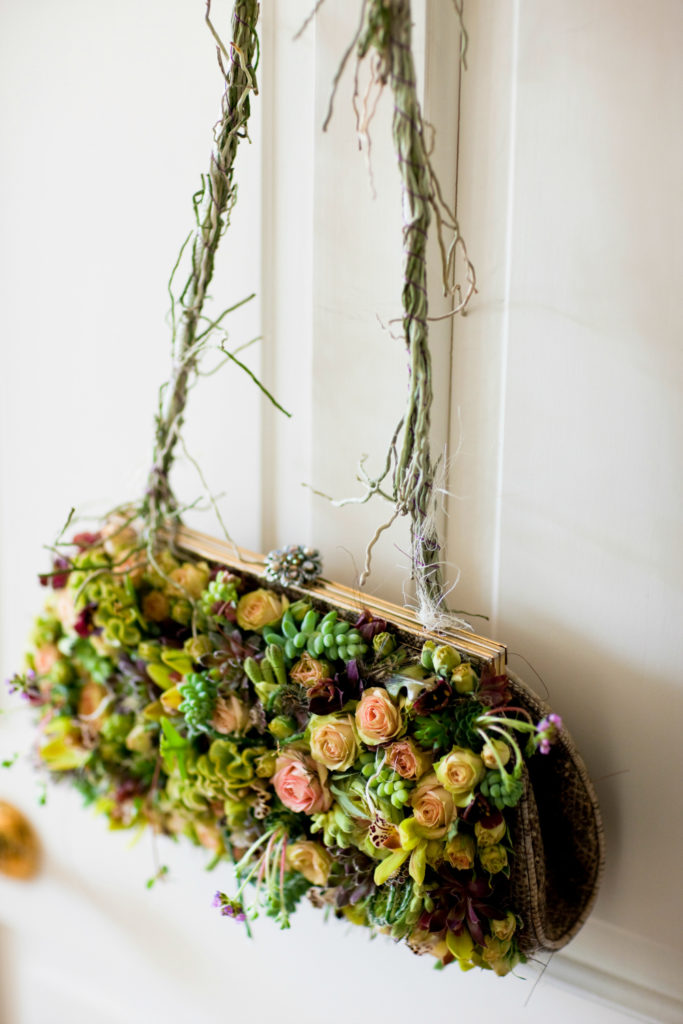
BB: You were recently selected as the RHS London Floral Artist in Residence for 2018. Congratulations! Can you tell us a little bit about that? How were you chosen and what will your responsibilities include as Floral Artist in Residence?
ZE: Oh, thank you. I was very honoured to have been chosen. I was asked to do four installations during the year but unfortunately, I had to decline the one planned for April as I am doing a class with an installation by my students at Barnsley House at that time. For the first installation which was in February I set up a snowdrop banqueting table with 40 covers. The next one will come up in June when I plan to exhibit my students’ work. The concept will evolve around “Fantasy Pollination”.
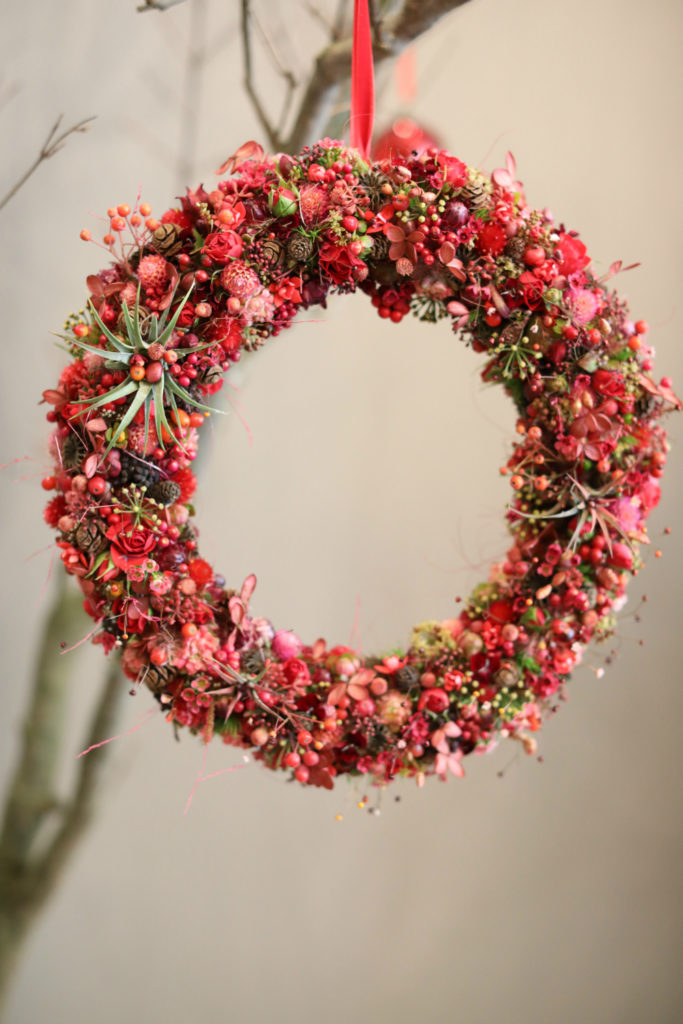
Momosoie Photography
BB: You are the Creator of the Living Embroidery Bridal Collection. Can you tell us
about that?
ZE: The living embroidery concept started in 2008, when I was invited to create an exhibit for the Chelsea Flower Show for the following year. The brief basically required me to create something new and innovative and to showcase my “ethereal and soft” style. The embroidery emerged as part of this installation.
First, I experimented with the technique on the back of a chair for an installation at the New Covent Garden Flower Market. It worked really well and so I decided to use it for my Chelsea exhibit. Actually I took a big risk there because the arcane rules of the Chelsea Flower Show state that you cannot use flowers outside of water, which my embroidery of course does.
Never having seen anything like this the Chelsea judges really had a hard time and ended up with a classic compromise: their verdict was silver-gilt.
Actually, my embroidered vase was still looking great at the end of the week, while all the other flowers in my exhibit, which were in water or in oasis, were visibly suffering from the drought and heat in the grand marquee. It was a big challenge to keep the exhibit looking great for the entire week.
Coming back to your question: I can trace the idea of floral embroidery back to a childhood memory and the work of my aunt. She produced beautiful embroidered dresses for kids and a pink one in particular stayed in my mind. I must have been around six years old at the time and I still vividly remember that the bodice of this dress was full of small roses made of delicate ribbons and other embroidery techniques. I had to experiment a lot to get the technique right; first, I used it on a rough surface and this went quite well; but applying the technique to a smooth surface such as a glass vase proved to be a real challenge and it took me a while to find a solution to make the flowers stick. Once you have mastered it, the embroidery technique is very straightforward but it demands precision and patience (here the bookbinding experience
certainly helps!), the most difficult part being to create beautiful patterns. To give you an idea, a tall vase can take two days to do and for a dress (depending on the design), several of us work five days on the skirt and another two days on the bodice. The more delicate blooms will be added on the last day. In most of my designs, I use spray roses as they provide a strong base to work on. The rest is then a multitude of textures, combining mostly fresh flowers and buds with the occasional use of some dried material.
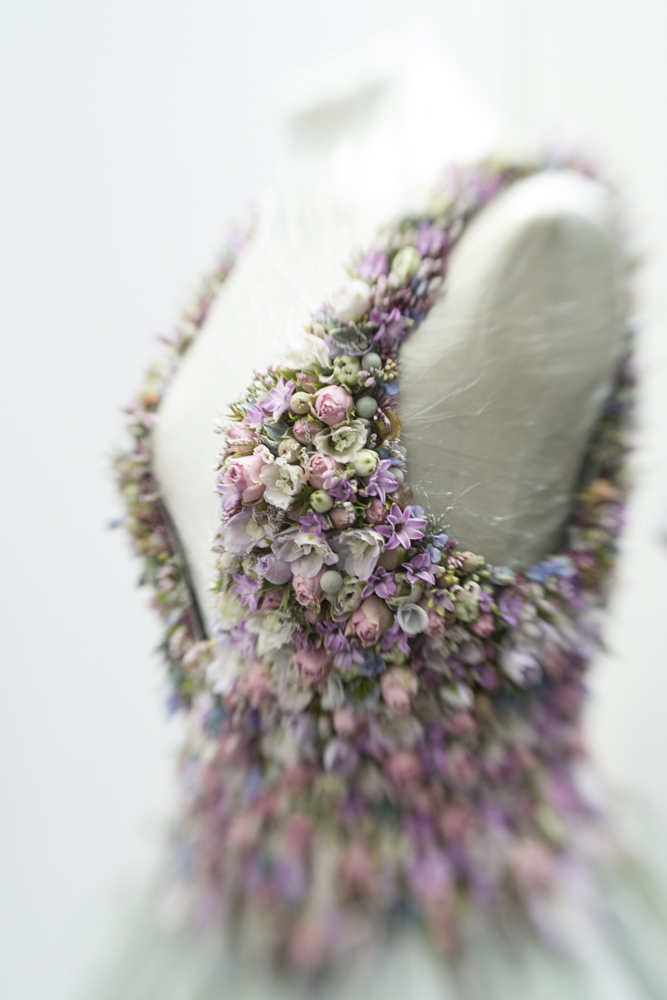
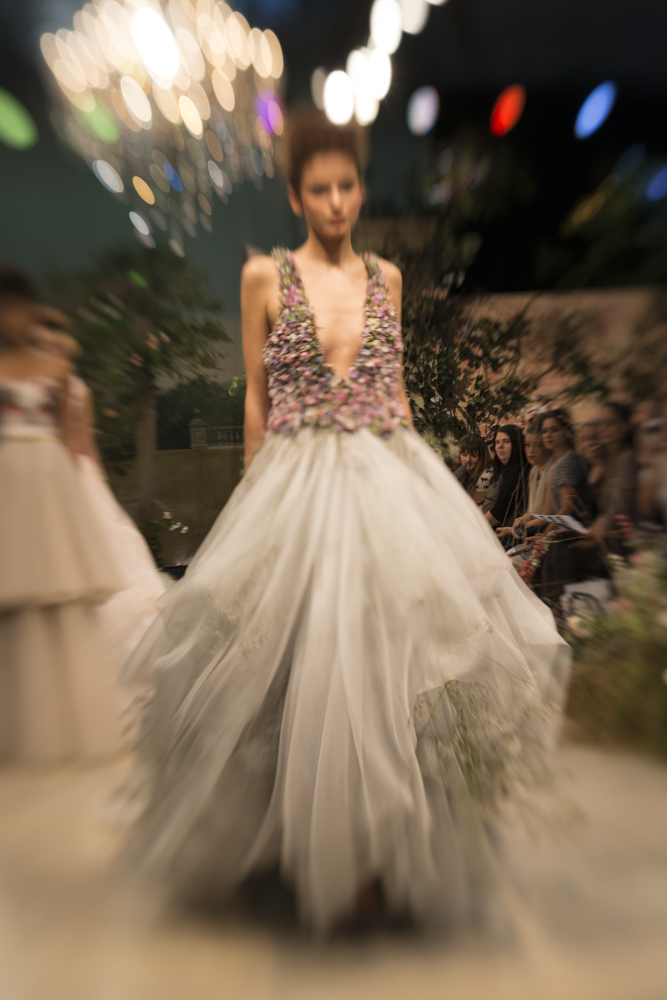
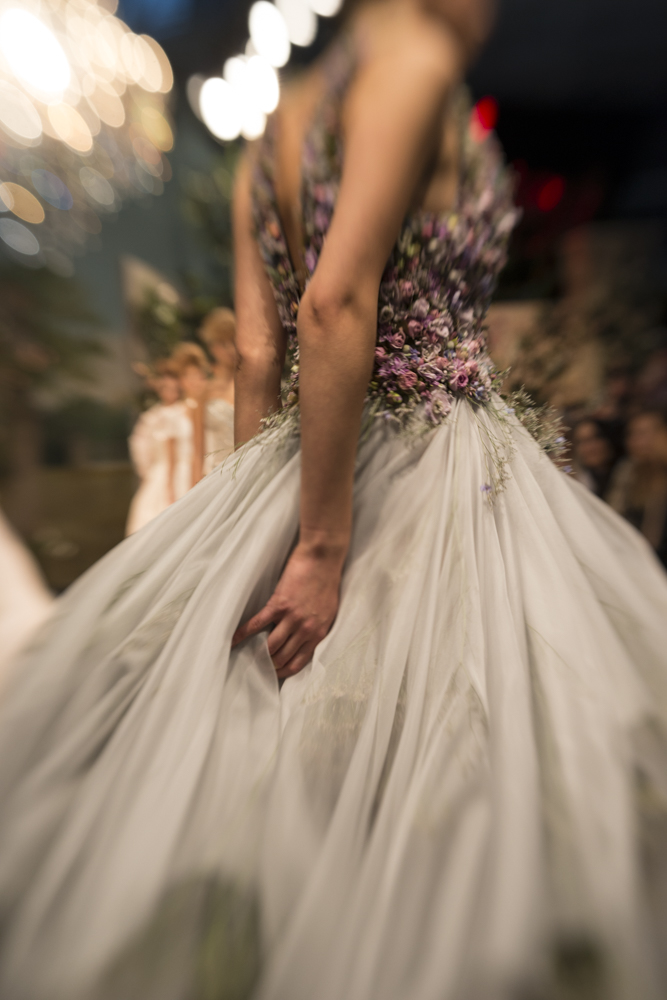
BB: Your floral artistry has adorned weddings, runway shows, The Chelsea Flower Show, hotels…the list goes on and on. Do any particular events stand out in your mind as pivotal moments in your career? If yes, how so?
ZE: The year after my graduation from Inchbald I won the Best Graduate Garden Designer Award for a hillside project in Northern Italy. This was very good for me at the time as I was just starting my business and it put me and my little shop on the map. The Chelsea Flower Show exhibit was a huge success too and also put me on the map – lots of people saw it on BBC2. I think what I mainly got out of it was the confidence to follow my instincts when designing.
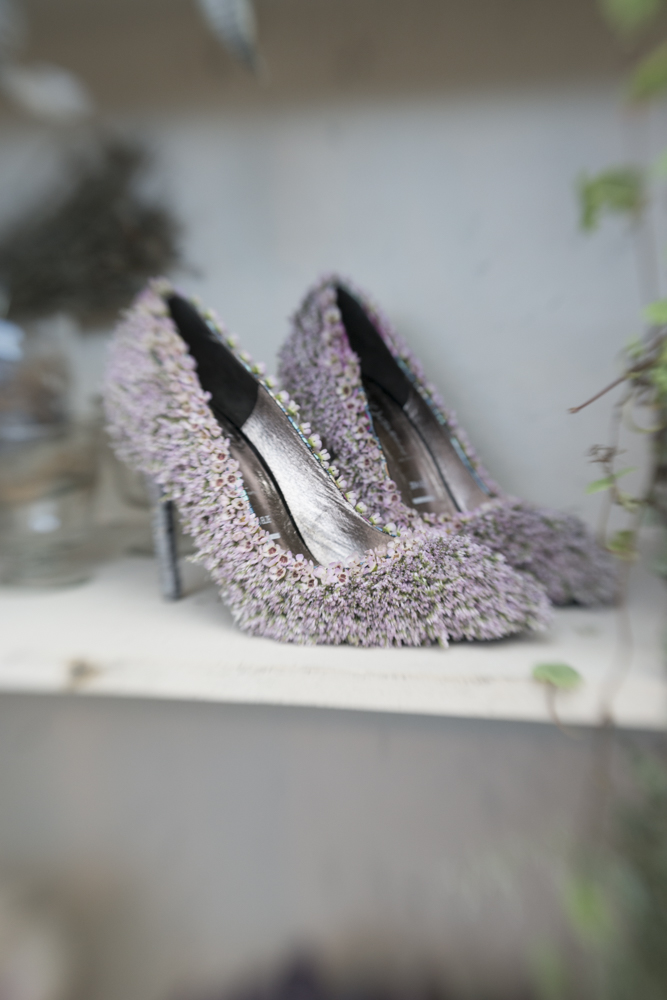
BB: What led to your decision to open the Zita Elze Design Academy in 2010?
ZE: When I was a student I hated being told exactly what I had to do and which rules to follow. I was never asked to express myself freely nor shown how to do that. Inchbald completely changed the way I look at design; their motto was: “If you want to be a great designer you need to break the rules”. This gave me the courage to express myself. I remember thinking if I ever become a teacher I will do just that, encourage people to break rules which I have been doing ever since then.
Later on I noticed that those who worked with me were interested in understanding my design process. I began to try and I understand this myself and I found ways to transmit it to others which I quite enjoyed – to open a school was then the logical next step. I called it the “The Zita Elze Design Academy (ZEDA)”.
At ZEDA I don’t do demonstrations for students to copy; instead, I try to help them to develop their ‘hidden’ ideas. My focus lies on helping each student bring to life their own creativity by using various techniques and processes I have developed over the years and which I use in my own design work. Teaching this way is challenging and I can only do it with very small groups. Sometimes I do teach larger groups abroad – I was in Korea and China last year, but I can’t do this very often as it is really exhausting. I really love teaching and I love sharing everything I know. I am very generous and I tell my students to follow this philosophy: “The more you give, the more you will get back.”
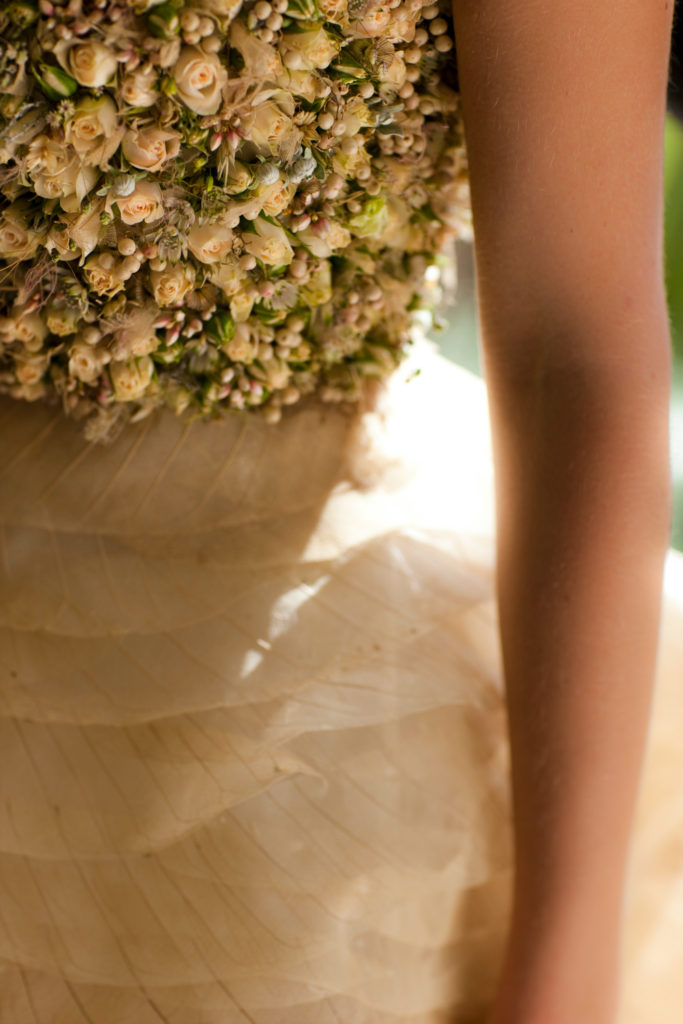
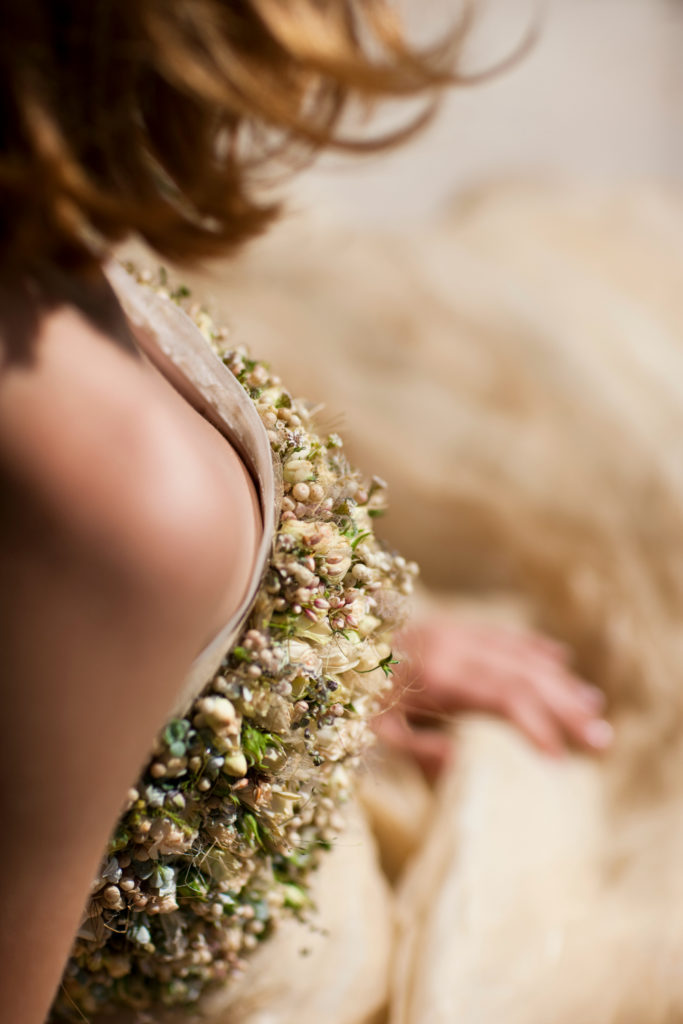
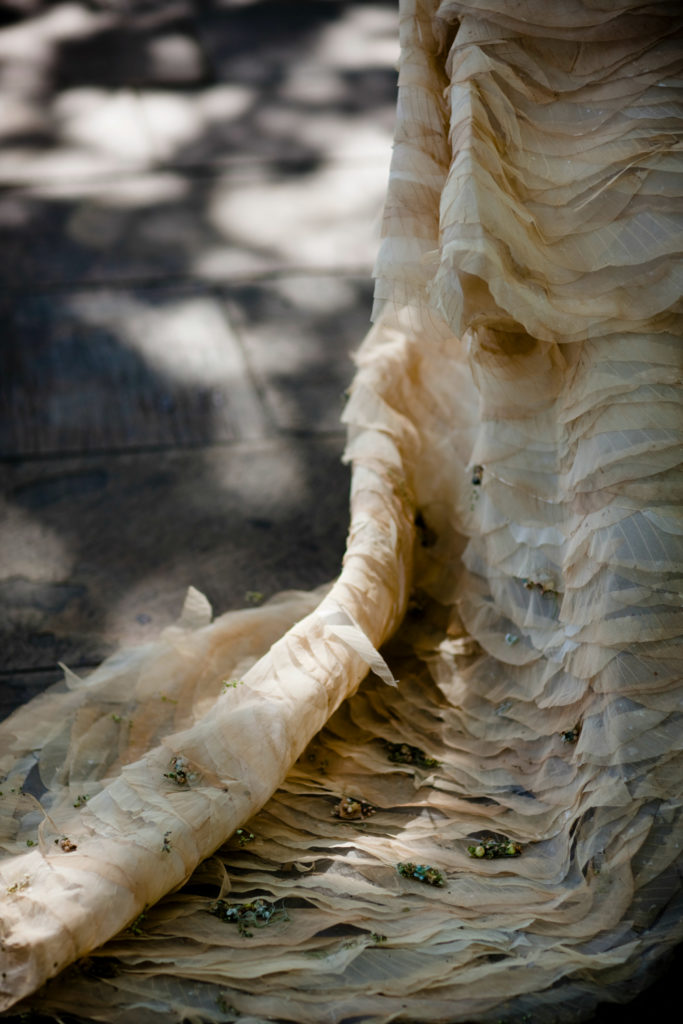
BB: What type of bride/groom would you consider your ideal wedding client?
ZE: I have done many weddings in the last 15 years and my ideal client is someone who trusts me and lets me do what is right for them and for the venue. Taking a good brief is very important. I ask a lot of questions until I grasp what they are about – once I have understood this I am sure I can create something they will love. My preferred client would behave in line with the demands ascribed to the famous 17 th century Japanese garden designer Kobori Enshu: No limitation of budget nor time and – most importantly – no meddling with the design (I think he asked the clients not to visit the site where he was building the garden before it was finished). Difficult then, difficult today…
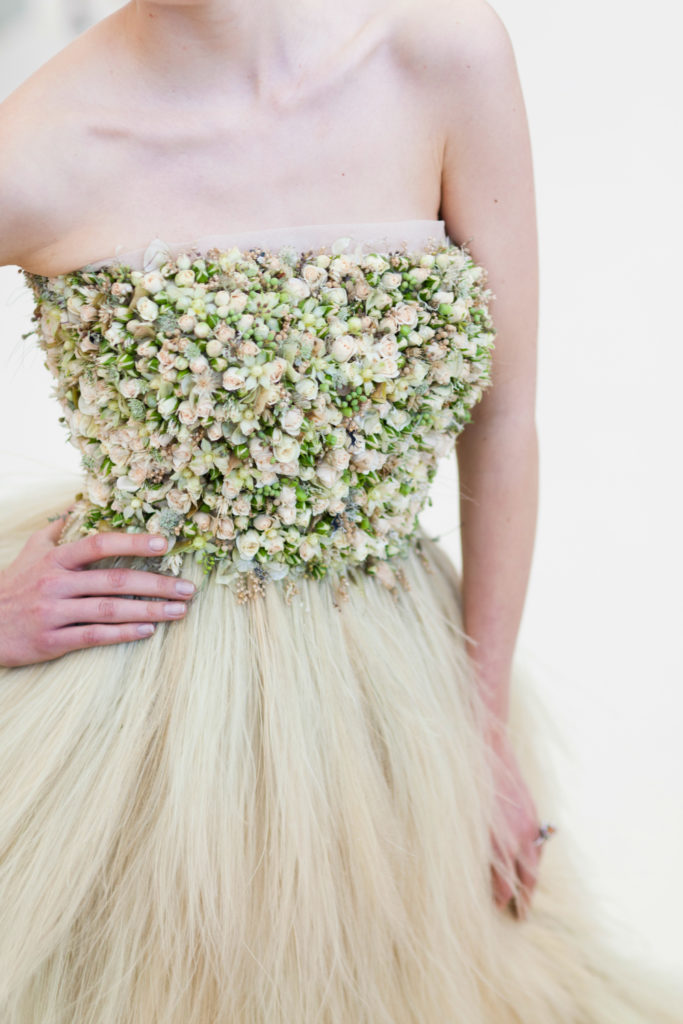

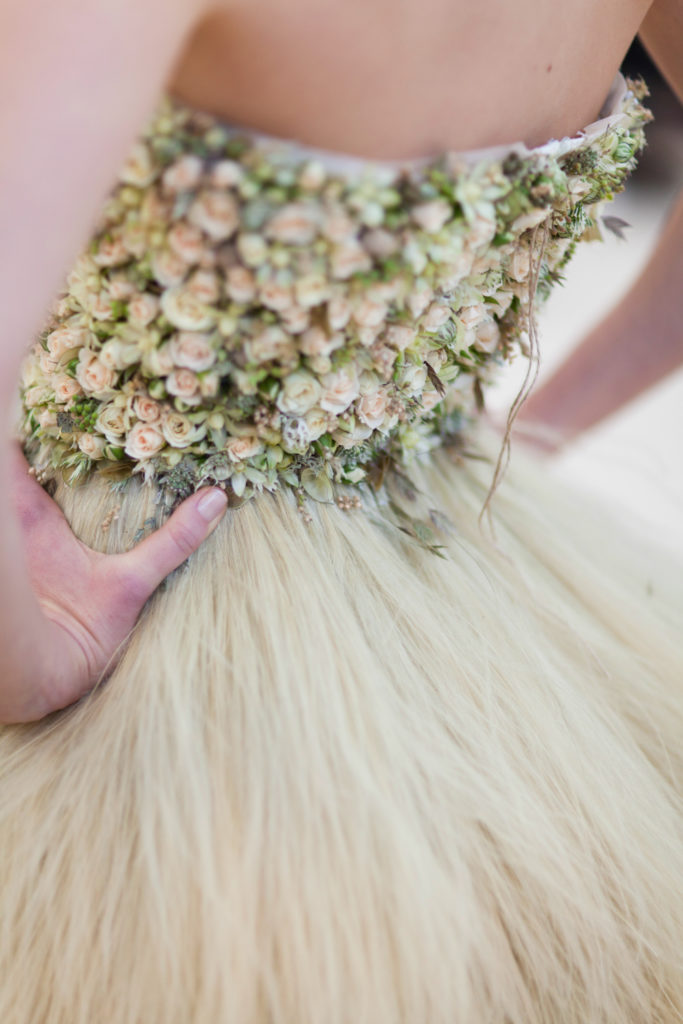
BB: What hurdles have you faced during your career?
ZE: Being a perfectionist is a big problem. I am always over budget because once I agree to a project I cannot deliver it in a half-hearted way.
BB: What does a typical day with you look like?
ZE: I don’t sleep very well. My mum used to say that if this girl could sleep no one could cope with her! Now I understand what she meant – I get a lot done but I could do so much more if I slept better!
Anyway, I wake up very early in the morning and I follow my routine: make my bed, brush my teeth, drink a fresh green juice and go for a walk along the river. On rainy days I stay inside and do some mediation. Then I do my paperwork and emails which I hate but it’s good to get them out of the way.
I fit a lot in a day because I do things one by one, little by little. One of my teachers at Inchbald once told us in a lecture that if you need to do maintenance in a garden and start doing bits here and bits there, at the end of the day your garden will still look like a mess – if however you start in one corner and then proceed systematically little by little you will finish the job faster and more effectively. This is wonderful advice and I have applied it ever since to everything: my house, my shop, my basement, my events, my classes, everything…
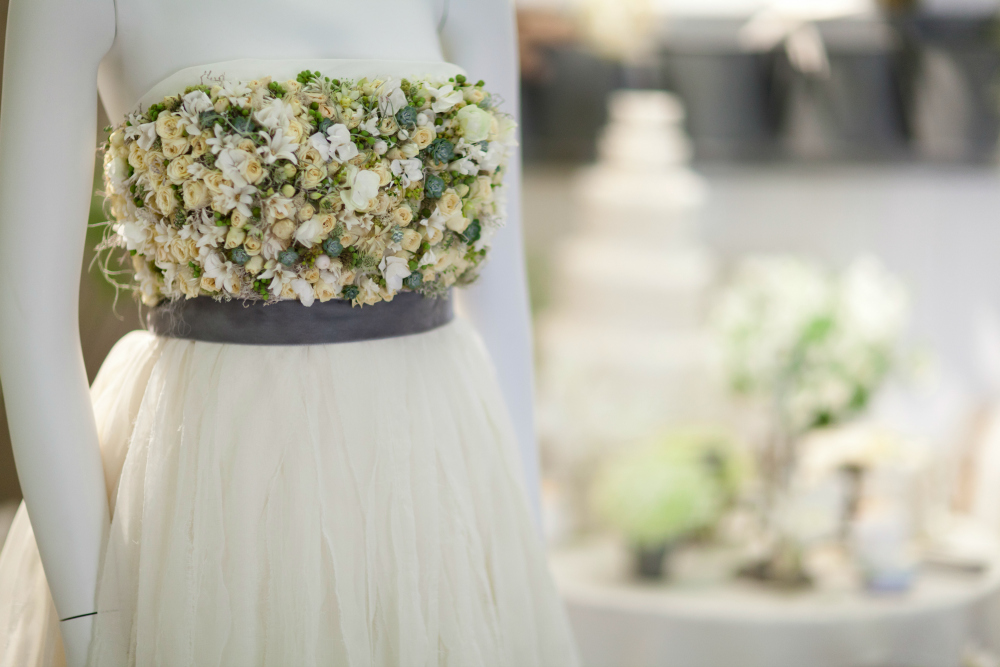
BB: Who do you admire professionally? Why?
ZE: In Paris we used to live in the Latin Quarter not far away from the Carrefour de l’Odéon where Christian Tortu had his wonderful shop. I loved his style then and still like to look at his books which I bought at the time – he brought the countryside to Paris and this was a big thing at the time. Later on I discovered Tage Anderson in Copenhagen, a true artist. Of course there are many others.
BB: What part of the industry would you like to see change?
ZE: Nowadays with the social media we are all inundated with images, often quite nice ones – if you are not careful, you easily get influenced and start copying what you see and like instead of getting inspired to do your own thing. I would like more people to be courageous and produce innovative designs – this is the philosophy I am trying to teach my students.
Another point relates to how flowers are produced – of course I would love to use only organically produced flowers from England, which must be the best place on earth for flowers! Unfortunately, the variety and quality available are often not what I need at a given time so I continue to rely on the global trade.
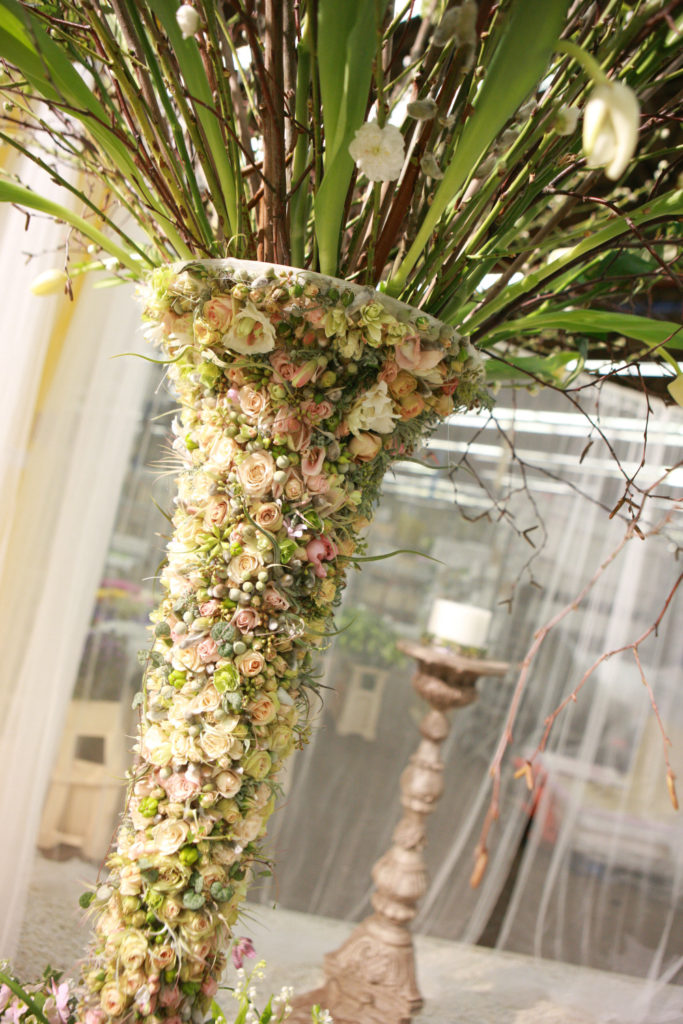
BB: Where do you find inspiration?
ZE: From everywhere but certainly not in floristry books, Pinterest and such like. I show my students many ways to get there and these are tools that I use myself: emotions, art books, google for specific searches, museums, travel, meditation, dreams, matching and adapting things, etc.
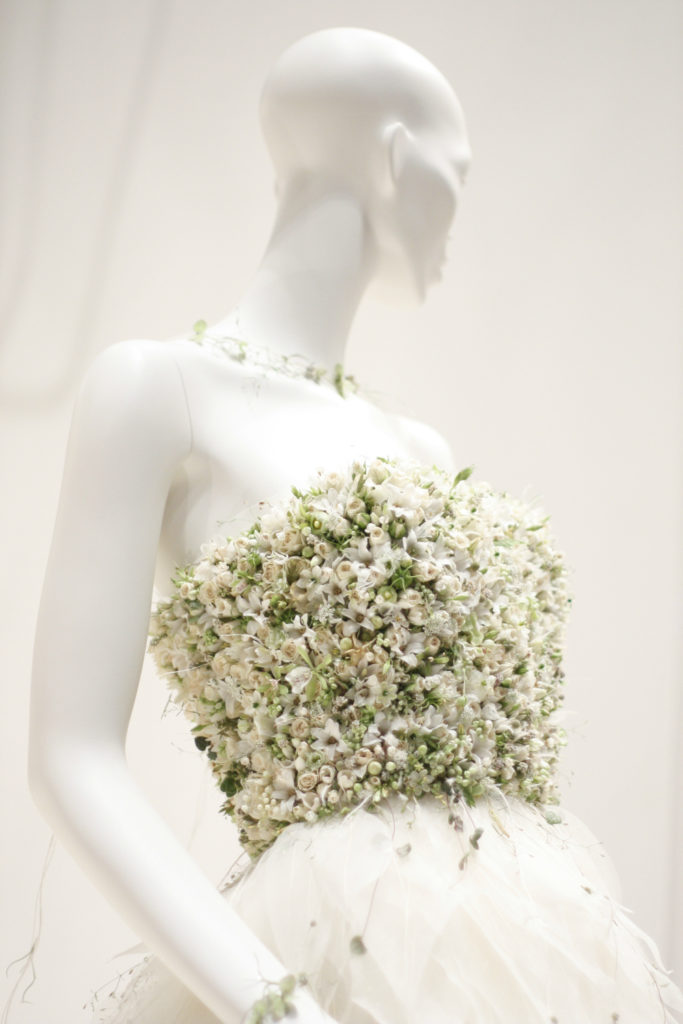
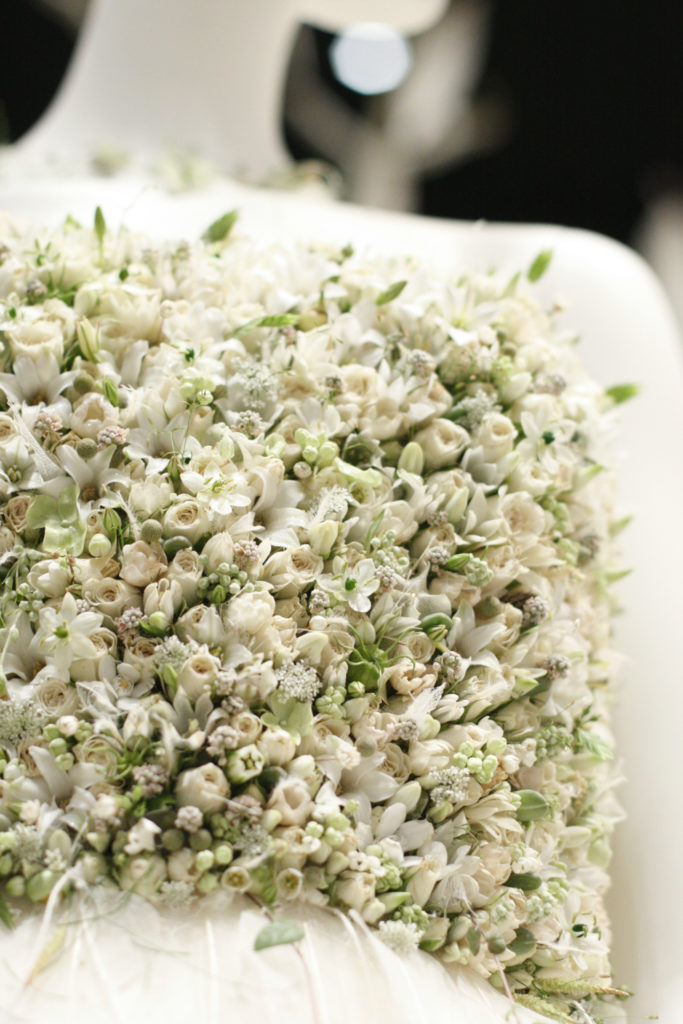
Image: Hiddeka
BB: What do you do to relax?
Zita Elze: I love traveling to nice places and nice hotels even if it is just for a night, eating healthy food, reading, meditating, being with my family, praying, staying at home, long river walks, listening to music, being at peace.
BB: How do you balance your personal life with your professional life?
Zita Elze: My life is calmer now, as my husband travels a lot and my kids are at university; so I don’t have too much on my plate from that point of view, which leaves me a lot of time to take care of my students and the business.
BB: How do you balance the many facets of your business – the weddings/events, the
retail shop, the academy, etc.?
Zita Elze: What I really love is designing and teaching – all the rest I do because I have to. My
weak side is the business and marketing side, I wasn’t born to take care of that!
See more by Zita Elze:
Website | Facebook | Pinterest | You Tube
If you enjoyed this interview, you might also like our conversation with Sachi, owner of Sachi Rose Floral Design. Click here to see the interview.
Leave a Reply
Share your Thoughts:
Subscribe and stay connected
This site may contain copyrighted material the use of which has not always been specifically authorized by the copyright owner. It is being made available in an effort to provide educational information about all things related to floral design and production. It is believed that this constitutes a 'fair use' of any such copyrighted material as provided for in section 107 of the US Copyright Law. In accordance with Title 17 U.S.C. Section 107, the material on this site is available for viewing without profit to those who have an interest in reading or viewing the website information for educational purposes. If you wish to use copyrighted material from this site for purposes of your own that go beyond 'fair use', you must obtain permission from the copyright owner. If your copyrighted material appears on this web site and you disagree with our assessment that it constitutes "fair use," please contact us and we will remove it from our site.

Comments: